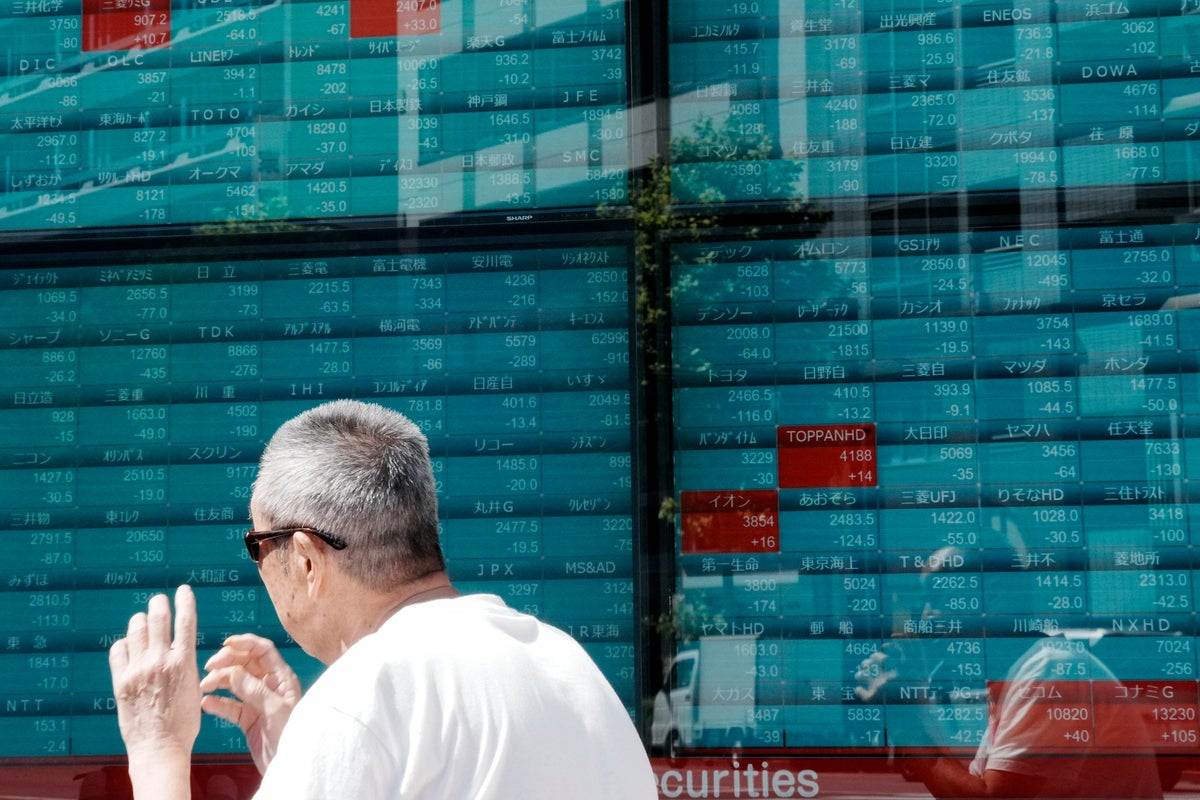
Your support helps us to tell the story
Asian stocks were mixed on Monday with several key markets closed for a holiday, after U.S. stocks finished their best week of the year and climbed to the cusp of their records.
Hong Kong’s Hang Seng dropped 0.3% to 17,312.37 after data released over the weekend showed a slowdown in China’s economy in August, as factory output, retail sales and investment figures failed to meet expectations. Meanwhile, the unemployment rate unexpectedly surged to a six-month high, adding further challenges to the fragile economy.
“The drums of a deepening economic slowdown are beating louder, and it’s time for China’s leadership to decide whether to step up or risk sliding further into stagnation,” Stephen Innes of SPI Asset Management said in a commentary.
Australia’s S&P/ASX 200 added 0.4% to 8,133.40.
Markets in Japan, mainland China and South Korea were closed for a holiday.
Investors will closely watch the Federal Reserve’s policy meeting on Tuesday and Wednesday, when the central bank is expected to announce its first interest rate cut since 2020. The Bank of Japan’s policy meeting on Thursday and Friday is expected to leave Japan's rate unchanged.
In currency trading, the Japanese yen strengthened against the greenback, with the dollar falling to 140.53 yen from 140.82 yen. The euro cost $1.1092, inching up from $1.1076.
U.S. futures and oil prices were higher.
On Friday, the S&P 500 rose 0.5% to 5,626.02 for a fifth-straight gain and is just 0.7% below its all-time high set in July. Rallies for Microsoft, Broadcom and other big technology stocks helped it claw back almost all its losses from last week, which was its worst in nearly 18 months.
The Dow Jones Industrial Average jumped 0.7% to 41,393.78 and the Nasdaq composite added 0.7% to 17,683.98.
Stocks also got support from the bond market, where Treasury yields eased ahead of this week’s meeting of the Federal Reserve. The unanimous expectation on Wall Street is for the Fed to deliver the first cut to interest rates in more than four years on Wednesday, and traders are rekindling hopes it may offer bigger-than-usual relief.
The Federal Reserve has been keeping its main interest rate at a two-decade high in hopes of slowing the economy enough to stifle high inflation. With inflation having eased substantially from its peak two summers ago, the Fed has said it can turn more focus to bolstering the slowing job market and economy.
How much to cut rates by will be a delicate balancing act for the Fed: Lowering them relieves pressure on the economy but can also give inflation more fuel. Reports earlier this week showed some underlying upward pressure may remain on inflation, which initially pushed traders to ratchet back expectations for the size of the Fed’s upcoming move.
On Friday last week, though, traders were seeing roughly a coin flip’s chance that the Fed could deliver a large cut of half of a percentage point, instead of the more traditional quarter of a point, according to data from CME Group. The federal funds rate is currently sitting in a range of 5.25% to 5.50%.
The yield on the 10-year Treasury eased to 3.65% from 3.68% last Thursday. The two-year yield, which more closely tracks expectations for Fed action, fell more sharply to 3.58% from 3.65%.
In energy trading, benchmark U.S. crude gained 22 cents to $67.97 a barrel. Brent crude, the international standard, added 16 cents to $71.77 a barrel.






